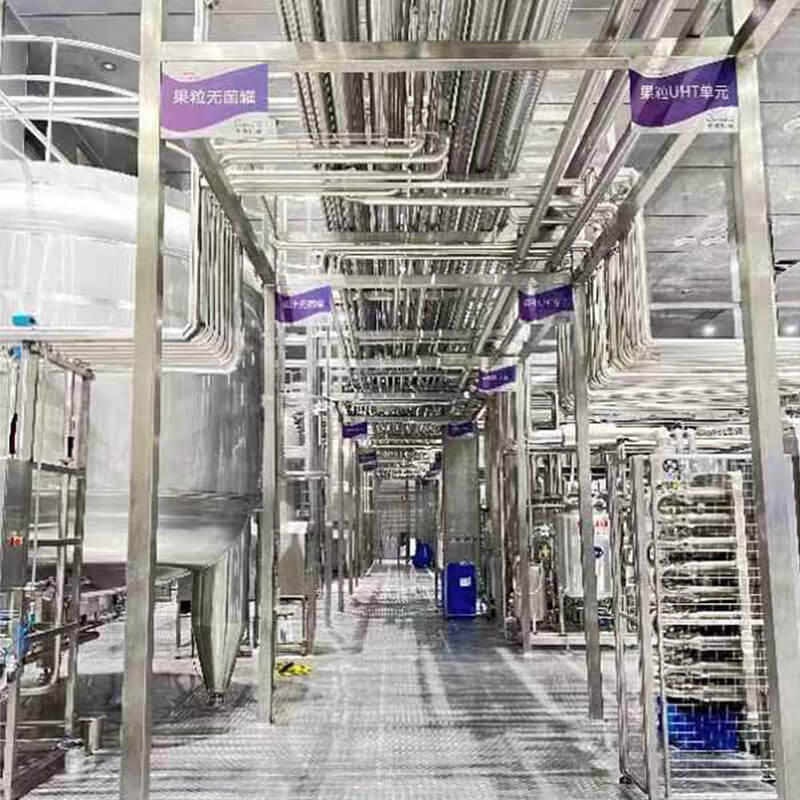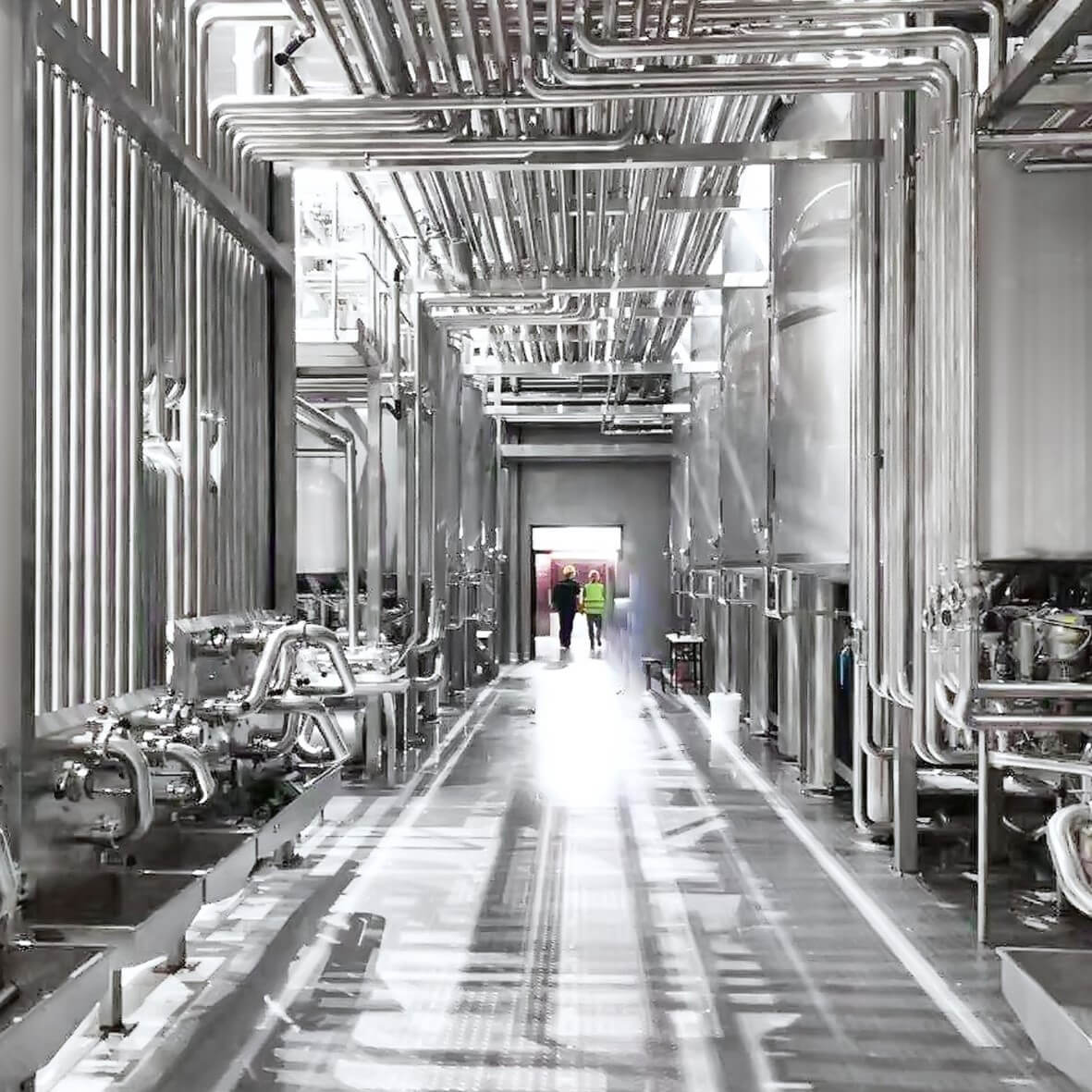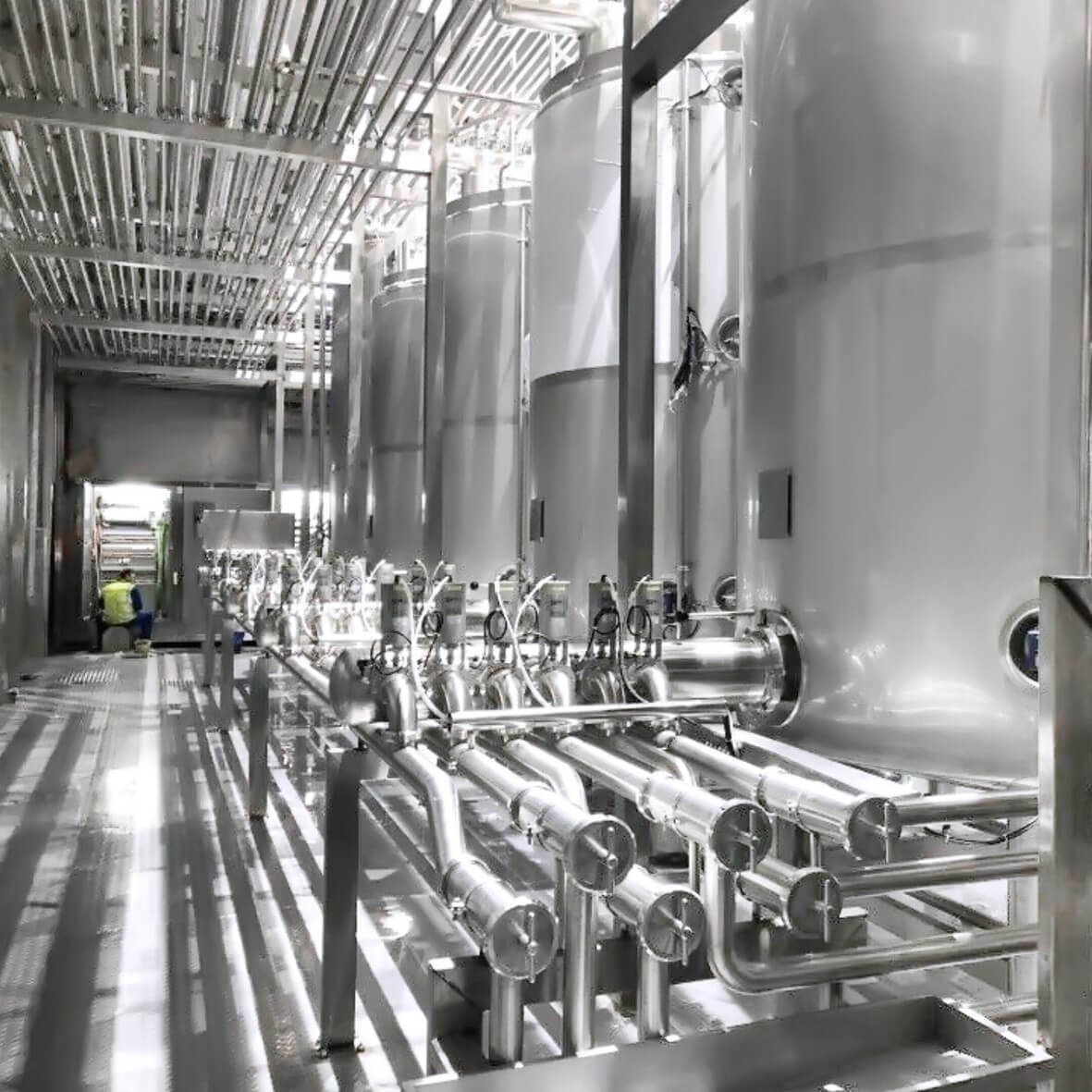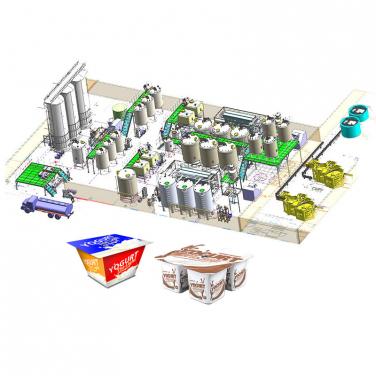
Blueberry oat yogurt, as a healthy snack or breakfast choice that combines fruits, grains, and dairy products, integrates multiple stages of food processing in its production process, mainly including the following key steps:
Raw material preparation: • Milk source processing: Firstly, fresh or refrigerated milk needs to be collected and processed to ensure its quality meets food safety standards. This step may include filtering, standardization (adjusting fat content), pasteurization, etc.

Oat processing: Oats need to be baked, cut, or crushed to become ready to eat oatmeal and may be lightly seasoned Mixing ingredients: According to the formula, mix the processed milk, blueberry ingredients, oatmeal, fermentation agents (usually lactic acid bacteria), sweeteners (if needed), stabilizers, thickeners, etc. evenly.
• Fermentation: • Fill the mixed material into a container and then send it into the fermentation chamber to ferment at a suitable temperature (usually 42-45 ° C) for several hours until the desired acidity and texture are achieved Cooling and adding fruit ingredients: After fermentation is completed, the product needs to be cooled to stop the fermentation process and allow the yogurt to solidify. After cooling, according to the product design, blueberry granules, whole blueberries or blueberry sauce, as well as oatmeal can be added, sometimes before or after packaging.
• Packaging: In order to maintain product quality and extend shelf life, cooled blueberry oat yogurt will be automatically filled into pre disinfected packaging, such as plastic cups, bags, or bottles, and sealed.
• Quality inspection and delivery: The packaged products will undergo quality inspection, including appearance, taste, microbiological indicators, etc., to ensure compliance with food safety standards before they can be shipped for sale.
• Cold chain logistics: As yogurt is a perishable food, it needs to be transported and stored in a cold chain throughout the entire process from the factory to the hands of consumers, maintaining low temperatures to ensure product quality.
The use of automation equipment is crucial throughout the entire production process, including automated filling lines CIP (Clean in Place) system, temperature controlled fermentation chamber, rapid cooling equipment, and modern packaging line to ensure efficiency and hygiene standards.

Technical highlights of blueberry oat yogurt production line
The blueberry oat yogurt production line integrates modern food processing technology with the concept of healthy eating, and its technical highlights are mainly reflected in the following aspects:
1. Automation and Intelligence: The production line adopts a highly automated control system, which reduces manual intervention and improves production efficiency and safety throughout the entire process from raw material reception, processing, mixing, fermentation, filling to packaging. The intelligent management system can monitor the production status in real time, optimize the production process, and ensure product quality consistency.
2. Low temperature short-term sterilization technology (UHT): During the milk source processing stage, the use of low temperature short-term sterilization technology can effectively kill harmful microorganisms while retaining the natural nutrients and flavor of milk to the maximum extent, creating a good foundation for subsequent fermentation.
3. Aseptic filling technology: Ensure filling in a sterile environment, extend product shelf life, without the need for additional preservatives, and meet consumer demand for natural and healthy food.
4. Precision ingredient system: By utilizing advanced measurement and ingredient technology, we ensure that the proportion of blueberries, oats, and other excipients in each batch of products is accurate, ensuring the stability of product flavor and nutritional value.
5. Efficient mixing and homogenization technology: Through efficient mixing equipment, blueberry grains, oat fragments, and yogurt base are fully and uniformly mixed. At the same time, homogenization treatment improves the delicacy of yogurt taste, making it smoother.
6. Rapid fermentation and temperature control technology: Using an accurate temperature control system to maintain a constant fermentation temperature, accelerate the fermentation process of lactic acid bacteria, and ensure that the active ingredients in the fermentation process are maximized to enhance the nutritional value of yogurt.
7. Environmental and energy-saving design: Modern production lines focus on energy conservation and emission reduction, using energy-saving equipment and recycling systems to reduce water and energy consumption, and reduce the impact of production on the environment.
8. Flexibility and Customization: The production line has the ability to adjust flexibly and can quickly produce blueberry oat yogurt with different flavors and packaging specifications according to market demand, meeting the diverse needs of consumers.
9. Food Safety Traceability System: Establish a full chain traceability system from raw materials to finished products to ensure food safety. Once problems are found, they can be quickly identified and measures taken to protect consumer health.
These technological highlights not only improve the production efficiency and product quality of blueberry oat yogurt, but also enhance the market competitiveness and consumer trust of the product.

The installation and debugging of blueberry oat yogurt production line is a complex and specialized engineering process, involving multiple links and equipment. The following are the general steps of the process:
1. Planning and Design • Requirements Analysis: Firstly, it is necessary to clarify the production scale, product specifications, target market, and quality standards, which will determine the overall design of the production line Layout design: Based on the factory conditions, design the layout of the production line, including the raw material receiving area, pretreatment area, fermentation area, mixing area, filling area, packaging area, and quality control area Equipment selection: Select suitable equipment such as cleaning machines, sterilization machines, fermentation tanks, mixers, filling machines, sealing machines, labeling machines, and packaging machines.
2. Installation preparation • Infrastructure construction: Ensure that the factory meets hygiene standards, the floor, walls, and ceiling meet food processing requirements, and complete the installation of infrastructure such as water, electricity, and ventilation Equipment arrival inspection: After the equipment arrives at the site, an unboxing inspection is carried out to confirm the equipment model, quantity, and completeness of accessories, in order to avoid missing parts during installation.
3. Equipment installation, positioning and assembly: Install each equipment in place according to the design drawings, including fixation, horizontal adjustment, and connection work Pipeline laying: material conveying pipelines Lay and connect CIP cleaning pipelines, steam pipelines, condensate pipes, etc. to ensure no leaks Electrical and automation system installation: including electrical control cabinets, sensors PLC programming HMI human-machine interface, etc., to achieve automated control of the production line.
4. Debugging and optimization • Single machine debugging: Conduct separate debugging on each device to ensure that it can operate normally and achieve the predetermined performance indicators Linkage debugging: Connect various devices in series for whole line linkage debugging, check whether the connection of each link is smooth, and solve possible problems such as lagging and blockage Process debugging: Adjust the formula ratio, temperature, time and other parameters to ensure that the final product's taste, texture, and stability meet the expected standards Cleaning and disinfection: During and after the debugging process, thoroughly clean and disinfect the entire production line to ensure food safety.
5. Employee training • Operation training: Provide training to operators on equipment operation, maintenance, safety regulations, and other aspects Quality control: Train quality management personnel, establish and improve quality management systems, and ensure product quality.
6. Trial production and acceptance • Small batch trial production: Conduct small-scale trial production, collect data, evaluate production efficiency, product quality, and cost-effectiveness Formal acceptance: Based on the trial production results, adjust and optimize, and finally pass third-party testing or customer acceptance, officially put into production.
The entire installation and debugging process requires close cooperation from a professional team, and may also require technical support from the manufacturer. In addition, it is necessary to comply with local food safety regulations and industry standards.
Shanghai Beyond Machinery Co., Ltd.
Beyond Machinery specializes in the design and manufacturing of Yogurt Processing Lines.Please contact us now, and our professional technical engineers will customize the equipment plan for Yogurt Processing Lines and provide a quotation. Please contact us now to obtain the latest equipment plan and quotation.



